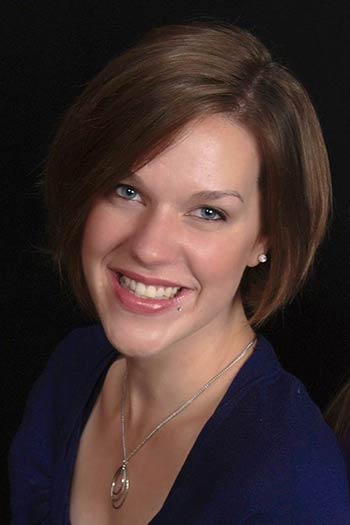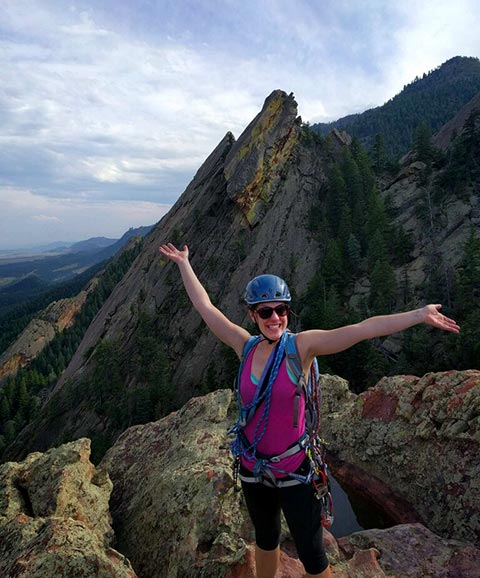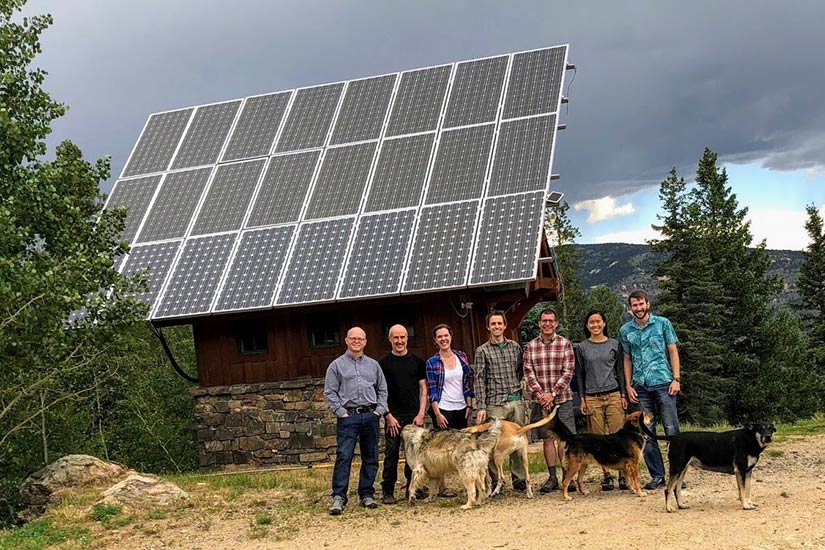How Janine Freeman Got Where She Wanted to Be
Some Soul-Searching and Road-Tripping Set Her on the Right Route to Her Goal of Working with NREL’s System Advisor Model

The Road to Realizing a Career in Renewables
Freeman grew up in Massachusetts, where she loved the woods and spending summer days at the lake. She went to Rensselaer Polytechnic Institute in New York to study mechanical engineering. Late in her undergraduate career, she started learning about renewable energy—and quickly realized that was her true passion.
She went on to get her master’s degree, also at Rensselaer. As a research assistant, Freeman helped plan and optimize vertical axis wind turbine designs for cities. After graduating, she looked at working at NREL—her dream job—but every position called for at least a decade of experience, so she joined the solar engineering firm.
There, Freeman started using various tools to simulate energy generation, optimize designs, and develop methods to evaluate uncertainty for solar projects.
One of NREL’s most popular tools, SAM is free techno-economic software that models many types of renewable energy systems, and beyond solar PV, it spans technologies from wind and concentrating solar power, to solar water heating, to battery storage with lithium-ion, lead acid, or flow batteries, to geothermal power generation. The tool is used widely, whether at tech-savvy engineering firms or by engineering professors or business owners. Coupled with its robust engineering, the model also offers detailed financial structures. Are you funding a PV project with another firm, and one of you qualifies for a tax equity? SAM can model that.
“Accurate PV system performance modeling is crucial to financing, verifying, and monitoring a PV system," Freeman said. "SAM is an excellent way to do that."
Detour of a Lifetime
During her time at the solar firm, Freeman kept running into the need for more accurate ways to use irradiance data: how much power is received from the sun. Popular PV modeling software—including SAM at the time—requires those inputs based on a flat plane, but solar panels are installed at a tilt. When the angle is factored in later, it introduces error, sometimes up to 10%. What if modeling software could directly input data from the plane of the array?
Freeman stored the idea away for later. Going straight into the workforce after years of school had caught up to her. She hit the road for a driving tour of the maritime provinces in Canada. Afterward she traveled to Hawaii, New Zealand, Australia, and Thailand.

“Sometimes taking a break puts you on the right path,” she said. It did.
When she returned, Freeman looked at NREL again for her next job opportunity. The timing was perfect. There was an open position for an engineer and software developer for SAM. She packed up her two cats and moved across the country to Colorado, where she joined NREL’s Strategic Energy Analysis Center to help develop SAM’s wind and PV power modeling capabilities. She was excited not only for the job, but also to meet so many people who shared her passion for rock climbing, and started to get into road biking as well in her new home.
After two years at NREL, Freeman pitched her idea of inputting plane-of-array data directly into SAM.
“I was still early in my career, and the principal investigator gave me a chance to run with it. That’s what makes NREL so special,” Freeman said. “The people are so nice, passionate, and smart. You can be talking to the world expert on a topic and not know it.”
The team secured funding and was able to add the plane-of-array data feature to SAM in 2013.

The SAM team on their 2018 annual retreat at offsite contractor Steve Janzou's house.
Sights Still Set on SAM Ahead
Seven years later, Freeman now leads the work on SAM, but says it never gets old. One day she is learning about financial projects; the next she is in the weeds with PV technology. She is now studying how to value uncertainty in models like SAM. These tools produce a specific outcome based on certain conditions, but they do not account for changes in those conditions. What if a model could produce a range of data to be more accurate? That is her latest question.
Freeman is also growing her understanding in the area of PV systems with batteries, a popular topic right now given its many unknowns. There are many different battery chemistries with varying solar configurations. She and the team are studying the impact of batteries and how they are operated on the finances of PV systems.
Through ongoing partnerships and stakeholder engagement tests, Freeman has built relationships with SAM users and PV modelers like her younger self. “It’s pretty neat to be on the other side of it, designing the tools and solving modeling challenges. I love how it’s all worked out.”
Learn more about NREL’s free data and tools for energy analysis research.
Last Updated May 28, 2025
